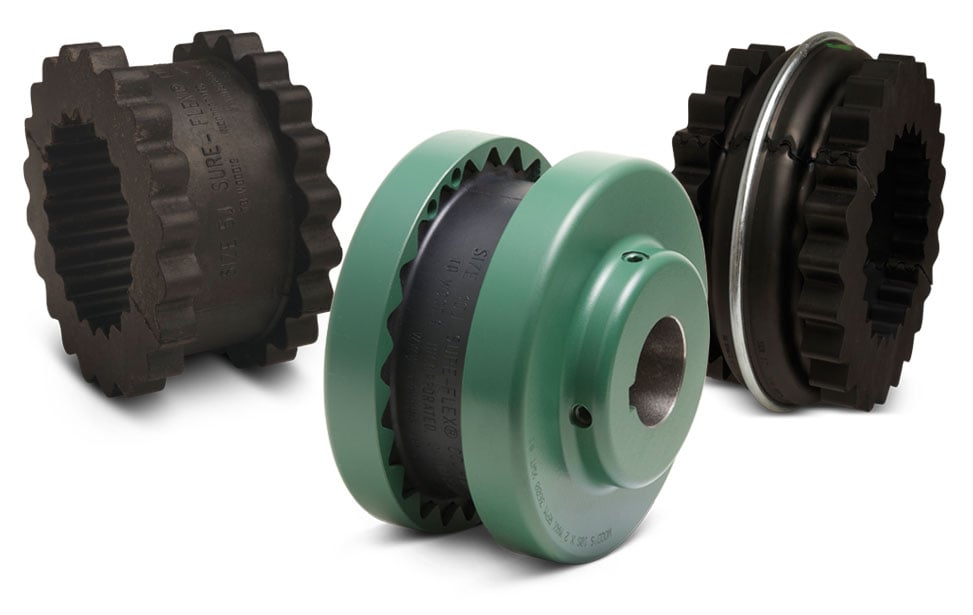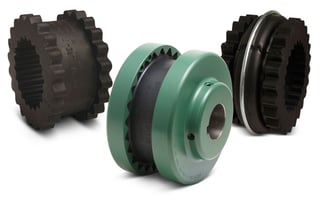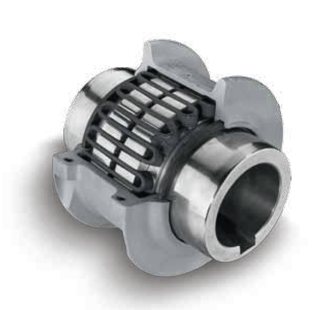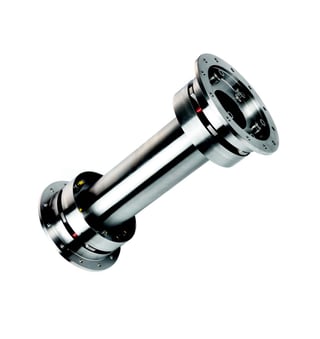
When selecting a new pump, the selection of the coupling is one of the most overlooked components. It is, after all, one of the least expensive pieces of the entire assembly. But this doesn't mean it's one of the least important.
Pump couplings connect the pump shaft and motor shaft together in order for the motor to efficiently transmit power to the pump. Like everything else on the pump, selecting the right coupling for the application can have positive or negative impact on the pump's lifetime performance.
To help you make the right choice, here are the pros and cons of the four most common couplings we see in pumping applications.

Elastomeric couplings are the most common coupling used today. They're found on almost every small to mid-sized pump installed due to their quick and easy installation and their innate ability to absorb all types of shock, misalignment, and end float.
There are many different manufacturers, each with their own twist in the design, but the concept is the same.
Elastomeric pump couplings consist two metal hubs that attach to both the motor and pump shaft. Between them is a hard rubber, EDPM Neoprene or urethane insert. Spacer designs are sometimes needed if a large distance between shaft ends exists. There's no maintenance necessary with this coupling, as it does not need lubrication.
Oftentimes the only piece that fails is the insert, which is relatively inexpensive to replace. The elastomeric coupling is a great choice for many applications, but doesn't do well with very high torque applications and can also be sensitive to chemicals and high temperatures.

Grid couplings are most likely found on big pumps with large motors and high torque applications. These couplings transmit torque through a spring set. They are stiff, inflexible, and cannot accommodate misalignment without imparting high radial loads on the bearings.
Grid couplings require regular lubrication. To do so, the pump must shutdown so the coupling can be disassembled. Regardless of proper lubrication, the metal to metal contact that comes with grid couplings causes inevitable wear. As they wear they lose their dynamic balance. Replacing these types of couplings requires moving the equipment, replacing and realigning.
Though this pump coupling can require more maintenance hours and lost production time than the elastomeric coupling, the grid design is essential for high torque applications.

Disc couplings are ideal for medium to high torque applications in marine, power generation, API and critical process industries. They are best applied where some torsional rigidity needed, but some allowance for misalignment is also required. Disc couplings are more accepting of high torque than elastomeric couplings and are generally more expensive.
The disc coupling does not need lubrication, so no maintenance is required. It can be inspected while running using a hand held portable strobe light. If it does need repair, it can be rebuilt onsite without removing the shaft hubs. Rebuilding can often be done for less than 20% of replacement.
Disc couplings perform well at high temperatures, up to 750ºF. If properly aligned, the life expectancy of the disc coupling, according to John Crane, is about 20 years.
The gear coupling is the oldest coupling design, dating back to the 1890s. Although the design is quite old and is far less common than some of its newer counterparts, it is still found in a few applications. Gear couplings are able to transmit high torque at high speeds, making them ideal for very large pumps and motors.
The gear coupling is mechanically flexible and allows for some misalignment between the shafts. It consists of two hubs with an external gear, and two outer sleeves with internal gears.
Gear couplings do require a fair amount of maintenance and care, however.
Although couplings may seem like a part that can be selected as an afterthought, it should be given more consideration than that. The right coupling can mean the difference between long lasting pump performance and failure (which you know will happen at the worst time possible).
If you're not sure which coupling is best for your application, talk to an engineer who is well versed in pumps and applications like yours.
Need help selecting the right coupling for your applications? Ask us about it! We gladly provide technical assistance to businesses and municipalities in Wisconsin and upper Michigan.
These Stories on Equipment Maintenance
Headquarters and Service Center
Located outside Green Bay, WI
707 Ford Street
Kimberly, WI 54136
920-733-4425
OptiFlow Design and Build Center
1002 Truman Street
Kimberly, WI 54136
920-733-4425
Burnsville Service Center
12265 Nicollet Avenue
Burnsville, MN 55337
952-444-1949
Grand Rapids Service Center
26489 Industrial Blvd
Cohasset, MN 55721
952-444-1949
© Copyright 2024. Crane Engineering. All Rights Reserved. Privacy Policy.